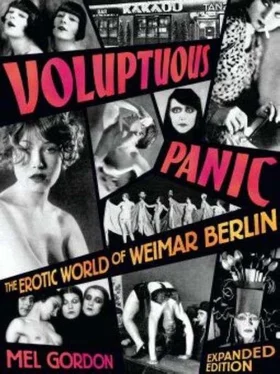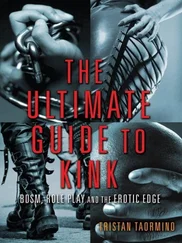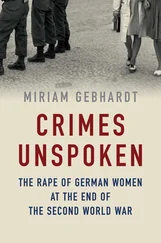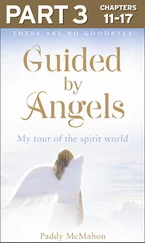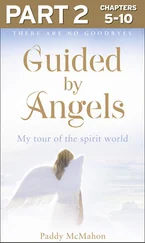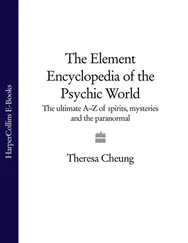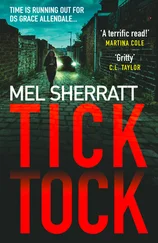Mel Gordon
VOLUPTUOUS PANIC
The Erotic World of Weimar Berlin
Expanded Edition

This book is dedicated to Barbara Ulrich, my co-conspirator. It is also dedicated to three Weimar wildchildren, Henry Marx, Felicity Mason, and Tonio Stewart. Each was a master raconteur. They spent much precious time with me, telling me about their Berlin years and their many adventures there and in exile. All of them passed away before I finished this project. They will be sorely missed. Greatly appreciated was assistance from Michael Thaler, Ulrich Sacker, Tony Kaes, Jean-Marie Pradier, Ingrid Eggers, Christophe Bourseillier, Nina Hagen, Ute Kirchhelle, Shade Rupe, Jennifer M. Kapczynski, Rosa von Praunheim, Greg Day, John and the boys upstairs at Moe’s.
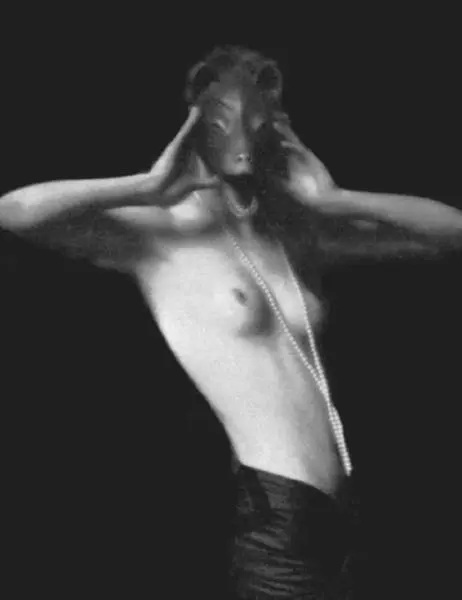
PREFACE

Voluptuous Panic began as research for an out-of-control theatre piece. In 1994, I wrote and directed a nightclub extravaganza for the German Queen of Punk Rock, Nina Hagen, entitled The Seven Addictions and Five Professions of Anita Berber . The theme of the production was the tragic and dreamy life of Anita Berber, the most glamorous decadent personality from Berlin’s Golden Twenties.
Berber consciously broke every social and theatrical convention of her time, and then proclaimed some startline theory to justify her provocative, outlaw behavior. She haunted the Friedrichstadt quarter of Berlin, appearing in hotel lobbies, nightclubs, and casinos, radiantly naked except for an elegant sable wrap that shadowed her gaunt shoulders and a pair of patent-leather pumps. One year, Berber made her post-midnight entrances looking like a drugged-out Eve, clad only in those heels, a frightened pet monkey hanging from her neck, and an heirloom silver brooch packed with cocaine.
On Berlin’s cabaret stages, Anita Berber danced out bizarre erotic fantasias—scenic displays, fueled by noxious concoctions of ether-and-chloroform, cognac, morphine injections, and a chic, pan-sexual disposition. Satiated Berliners, after a few riotous seasons in the early Twenties, finally tired of Berber’s libidinous antics. The high priestess of choreographic decadence died a pauper’s death in 1928, the result, more or less, of a desperate attempt to quit cold-turkey from her most beloved of addictions, cognac.
Nina Hagen and I rejected the notion of Anita Berber as a doomed flapper or artistic victim of Berlin’s uncaring, patriarchal public, For us, she was the first postmodern woman: a vibrant Marilyn Monroe with the devious, adolescent mind of Norman Mailer. Her life needed to be celebrated.
I decided to organize the performance like an invented German cabaret evening with discrete units of wild 1920s-going-into-the-1990s, Weill-Hollaender music; erotic Expressionist sketches, hardcore Berber dance (with sacred dildos and morphine syringes as props); smutty poetry-recitations-in-the-nude, and loops of Weimar pornography—all running in a side-show sequence and introduced by an evil, beyond-Joel-Grey MC, delivering witty, narrative commentary.
Finding authentic erotic images of Twenties Berlin for my show would be the simplest of a dozen directorial tasks. I figured two of three days (tops) in the public library would suffice. To my initial surprise, there were relatively few lurid Weimar pictorials, other than the obvious George Grosz and Otto Dix etchings of grotesque whores, war-cripples, and bald-headed exploiters.
The authoritative history of racy men’s periodicals, Mark Gabor’s The Pin-Up (Bell Publishing: New York, 1972) maintained, “In Germany, there were no girlie magazines of consequence until after 1945.” [In fact, I later learned over 80 such mags could be found in Berlin kiosks in 1930.] The researchers for Bob Fosse’s film Cabaret , which was shot on location in Berlin in 1971, also reported a remarkable lack of erotic documentation; one of them complained to The New York Post , only literary routines and political satires remained of the old cabaret milieu. Even contemporary German-language books on the subject of interwar Berlin contained pitiful numbers of the provocative visuals that the production concept demanded.
My brain reeled. Did the Nazis or frightened Berliners destroy every suggestive publication during the politically sobering Thirties and Forties? Were Allied firebombings equally responsible for the incineration of Berlin’s debauched past? Or maybe such print or photographic material from the orgiastic Weimar era never really existed as I imagined them.
Relying on private European contacts and antiquarian bookstores, I launched a feverish search for all bits of data and representations from pre-Hitler Germany. Within a few months, I had acquired dozens, then boxes, of extraordinary Weimar Berlin paper items, erotic news magazines, cabaret postcards and playbills, sexy hotel brochures, Galante journals, verboten travelogues, illustrated “Moral Histories” ( Sittengeschichten ), underground tabloids, popular crime weeklies, and naughty, what-to-do-after-midnight guidebooks. These saucy remnants contained not just pictures and photographs but descriptions, exposés, and print enticements of every sort.
The living ephemera of a lost Berlin, if only a few hundred scraps, had fallen into my hands. Now I had considerably more than a cache of weird material to brighen up a wild performance project. Scattered around my copy stand was enough arcane junk for a book. Or two.■
A disgusting city, this Berlin, a place where no one believes in anything.
Cagliostro, 1775
And now we come to the most lurid Underworld of all cities—that of post-war Berlin. Ever since the declaration of peace, Berlin found its outlet in the wildest dissipation imaginable. The German is gross in his immorality, he likes his Halb-Welt or underworld pleasures to be devoid of any Kultur or refinement, he enjoys obscenity in a form which even the Parisian would not tolerate.
Netley Lucas,
Ladies of the Underworld , 1927
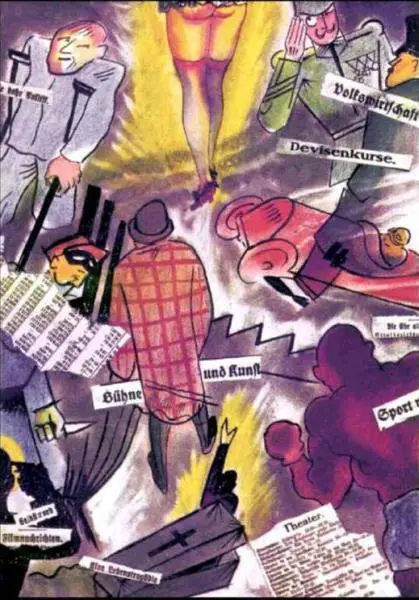

Self-strangulation, Speedy Schlichter, 1928
Berlin means depravity.Moralists across the widest spectrum of political and spiritual beliefs have condemned by rote this chimerical metropolis as a strange city, built on strange soil. Even the alkaline air around the Prussian capital (Berliner Luft ) was said to contain a toxic ether that attacked the central nervous system, stimulating long-suppressed passions as it animated all the external tics of sexual perversity. In the center of Europe, mesmerized audiences were warned, sits a nightmare municipality, a human swamp of unfettered appetites and twisted prurient proclivities. The American writer, Ben Hecht, self-described bon vivant and one-time foreign corespondent for the Chicago Daily News , characterized the expansive pre-Nazi cityscape succinctly as the “prime breeding ground for evil.”
Читать дальше
